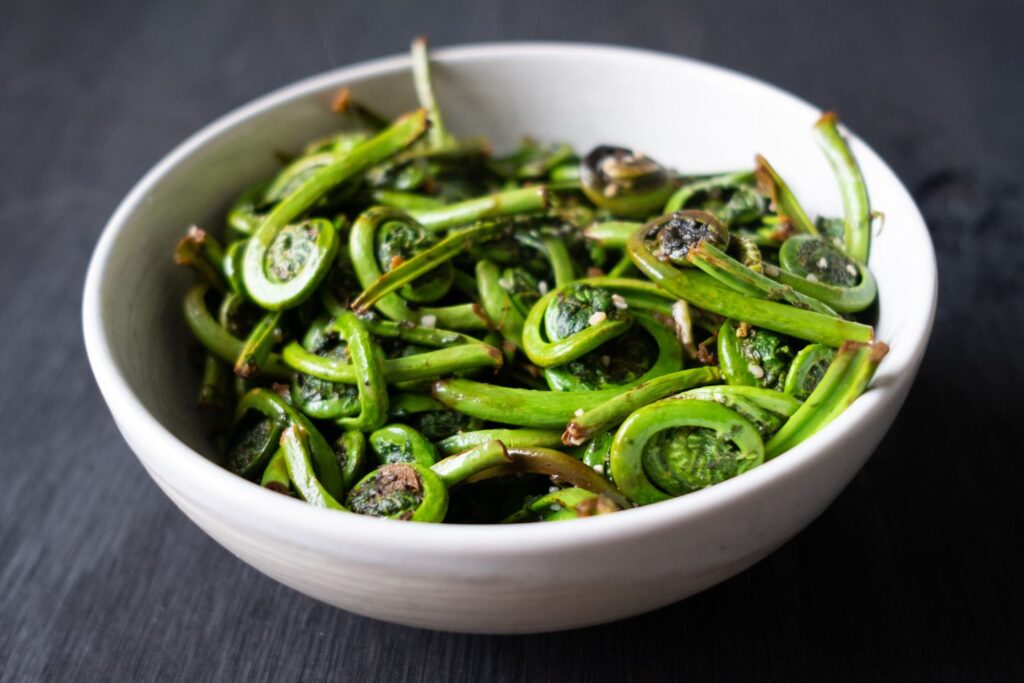Ferns do a grand unveiling every spring by unfurling their violin top-shaped shoots into lush green fronds. These fern fiddleheads are one of those choice wild edibles every wild foodie talks effusively about. It’s for good reason as this wild green vegetable is delicious eaten simply or made into delectable recipes.
All ferns do a rendition of fiddling when they sprout so you need to know how to identify the desirable fiddleheads.
Ostrich fern fiddleheads (Matteuccia struthiopteris) are the most widely sought-after variety, prized for their tender texture and mild flavor. They can be identified by their deep green color, smooth stem, and a brown, papery covering called the “fiddlehead sheath.”
As the fern frond uncoils the brown paper husk flakes away. So if there is no brown papery covering, it’s either not an ostrich fern or it’s an ostrich fern too mature to eat.
Lady fern fiddleheads (Athyrium filix-femina) have a more delicate flavor than ostrich ferns and are characterized by their bright green color and slightly hairy stem.
Fiddlehead foraging is generally from late April to early June before the fiddleheads grows into fern fronds.
Fiddleheads are rich in potassium, iron, antioxidants, and omega-3 fatty acids, fiddleheads are fantastically nutritious. They are best cooked with lemon and butter, but can be eaten raw.
